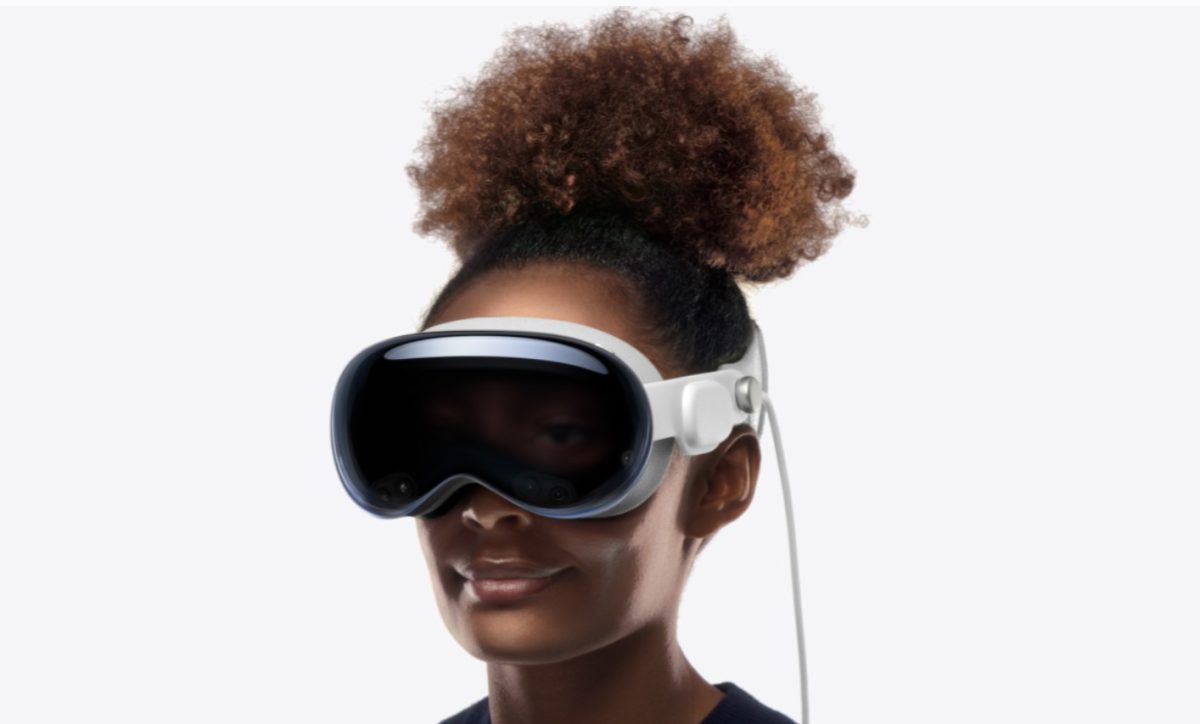With the release of the Apple Vision Pro on Feb. 2, many have been fascinated by what seems to be the next step in technology: augmented reality.
Augmented reality (AR), the cousin of virtual reality, has been gaining popularity in recent years. The idea of seeing the real world but with “enhancements” seems to captivate the attention of the public. But the most famous previous attempt, Google Glass, flopped hard. So what makes this different?
AR takes some cues from virtual reality: It is either a headset or glasses with a screen inside of it that shows the user a different world. But where it differs is in its presentation. While virtual reality shows a completely different world, AR shows the real world with some virtual elements in it. Users can see things that don’t actually exist in the real world, like an app or a movie. Think of it as wearing an iPhone on your face, but you can see through it and interact with it.
AR has existed for a long time. It was invented in 1968 by Ivan Sutherland, and the first commercial usage was in 2008. But it has only recently been taken seriously. It was first considered a gimmick that had no actual practical uses; it was just a simple way to show something on your phone and use your camera to “put” it in the real world. For example, people could download Pokemon Go and use its AR mode to catch a Pokemon.
Ever since virtual reality began to be taken more seriously, so too has AR. But what practical uses can it have?
One of AR’s many uses is entertainment. Watching a TV show in your room without actually needing a TV is very practical. A mechanic could repair a car while watching a tutorial. AR could also be useful in medicine. For example, when a pharmacist needs to get a prescription for a patient, AR glasses can provide the precise location of the drug.
The applications for AR are, in reality, limitless. It just matters how much regulation goes into it from the companies and governments. The most likely thing to happen is that the laws for phones will be applied to AR, such as not wearing them while driving and being mindful of one’s surroundings.
As previously mentioned, Google Glass, the last major attempt at AR, failed. So how is Apple Vision Pro different?
For starters, the tech is way better and more sophisticated. Google Glass wasn’t very helpful. It was like wearing a Siri on your face, with touch controls and a heads up display (a projection projected onto glass). For example, if you were using Google Maps and it showed you which way to turn, the image was only over one of your eyes, so you lacked depth perception.
The heads up display just wasn’t revolutionary technology as it was similar to the other heads up displays on the market. One of the main things people want from something like that is the entertainment aspect of it, and there is only so much one can do with a heads up display in terms of entertainment.
Google also did a bad job of marketing the product. Instead of presenting it as a proof of concept of what was to come in the near future, they showed it as the next-gen cutting edge piece of technology. So people got their hopes up and got severely disappointed with the result.
What makes the Apple Vision Pro different is that Apple knew what to market it as, and the end result was the same thing they showed off in their tech demos. They showed something that looked like a VR headset that was marketed not as an AR device but as a “spatial computer that blends digital content and apps into your physical space, and lets you navigate using your eyes, hands, and voice.” But in practicality, it is an AR device. It has a screen inside of it that shows your surroundings with cameras on the outside.
The main question remains: Is augmented reality the next step in technology? It appears the answer is yes. It has many interesting uses and is being tested out by large companies, such as Apple, with the Vision Pro; and Meta, with the Meta Quest 2 and 3. But Meta also doesn’t market the headsets as AR; they market them as VR and “mixed reality headsets.”
There are some mixed opinions about the Apple Vision Pro. Some think it is the next leap in technology, but others think it is kind of stupid. One criticism is that it may pose a danger to civilians who walk and use public transport – they might get distracted by it and walk into traffic. And two, it looks silly. It’s not at the level of just putting on glasses – a user has to put on a big ol’ headset weighing a pound and a half and walk around with it. It’s bulky and could snag some glances if you were to wear it out in public.
So we have a long way to go with it, but AR might just be the future.













